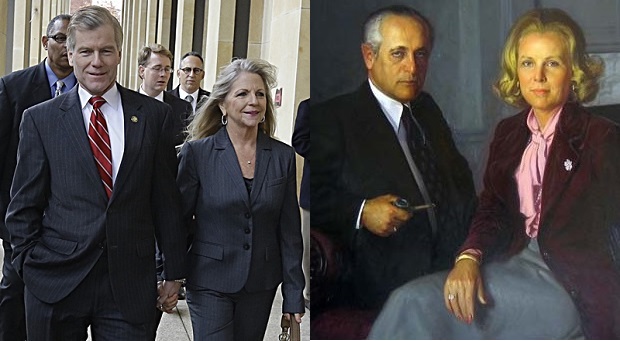By Barry Rascovar
For MarylandReporter.com
As an early New Year’s gift to Maryland taxpayers, Gov. Larry Hogan Jr. delivered the final blow to an outrageously priced scheme aimed at turning over to private investors the 28-acre State Center complex in Baltimore for redevelopment.
Hogan’s predecessor, Gov. Martin O’Malley, had pushed hard for the State Center deal in a way that benefited the developers but left the state with unconscionably high rental payments for the next half-century – beginning at $30 million-plus per year, escalating by 15 percent every five years.
O’Malley’s proposal also would have threatened the state’s triple-A bond rating by smashing through Maryland’s debt ceiling.
Additionally, the deal hinged on the state constructing for the developers a high-priced underground garage, costing $28.3 million. The money to pay for the 20-year bonds on the garage would come out of the state’s struggling Transportation Trust Fund at roughly $2 million a year.
It was a boondoggle of immense proportions disguised as a redevelopment of State Center to help revive midtown Baltimore.
Public-Private Partnership
The initial plan, worked out by the Ehrlich administration in the early 2000s, made sense as a model for smart transit-oriented development. It was the sort of public-private partnership that would benefit Baltimore, the state and the developers – office space, retail, apartments and community amenities centered around two mass-transit lines.
Then came the Great Recession. What had been feasible plans for State Center’s re-birth crumbled. As lingering effects of the recession dragged on, the State Center proposal took on more of a Mission Impossible cast.
When O’Malley revived the proposal with new developers and a new set of financing numbers, what had been a good deal looked more and more suspect.
The legislature started asking questions and looking at the proposal’s details. Analysts for the General Assembly didn’t like what they discovered.
The state was being asked, essentially, to underwrite this massive $1.5 billion project. There would be only one prime tenant in the developer’s lone Phase One building – the state of Maryland, occupying nearly all of the office space.
Even worse, the developers wanted to charge the state unheard of water-view rental rates for a mid-town building overlooking other mid-town buildings, a hospital and a public housing project.
Then the underground garage was added to the state’s to-do list by the developers. As an analyst for the Department of Legislative Services put it, “A significant amount of private investment has been continuously stripped out of the plan.” It was replaced by state taxpayer dollars.
Kopp and Franchot Skeptical
Comptroller Peter Franchot bailed out as a State Center supporter some five years ago, complaining about the exorbitant rents and the fear of losing Maryland’s money-saving triple-A bond rating.
Treasurer Nancy Kopp kept worrying about breaching the state’s borrowing limit by undertaking the State Center project.
Thus O’Malley no longer had the votes to gain Board of Public Works approval to complete the deal with the developers.
When Hogan entered the picture, he tried to work out a fair deal with the developers that would not leave the state holding the bag and the developers reaping all the rewards.
He even turned to mediation with the developers. But the numbers wouldn’t work unless the state contributed heftily to the development project. It made no sense.
So Hogan pulled the plug on the State Center arrangement just before Christmas and then sued the developers to leave no doubt the deal had been cancelled.
What’s Next?
What happens to State Center after the legal finger-pointing ends is an open question.
It would cost in excess of $200 million for the state to replace its office buildings on the site. That’s money the state lacks at the moment.
More feasible would be leasing deeply discounted office space for state agencies in nearly-empty downtown high-rises while working with the city on a new residential-and-retail plan for the State Center acreage.
Franchot even proposed a pie-in-the-sky idea: a large sports arena for Baltimore on the State Center site. The Maryland Stadium Authority has been tasked by Hogan to investigate this remote possibility.
It’s unfortunate that a prolonged economic downturn cut the legs out from under the original State Center development plans.
Now it’s time to start all over.
Let’s re-imagine what State Center could become a decade from now: A catalyst for strengthening midtown neighborhoods, creating a new residential corridor and giving state workers quality office space on the current site or at a more affordable location somewhere in Baltimore’s downtown area.
Hogan faced reality and pulled the plug because the deal on the table didn’t work. His next move will be even more important: defining the future uses for this valuable 28-acre property.
Barry Rascovar’s blog is www.politicalmaryland.com. He can be reached at [email protected].







I, as a Maryland citizen and taxpayer, don’t need or want a prohibitively expensive luxury such as this !
And, the bureaucracy will be as moronic, ineffective, and mostly a waste as always !
This won’t improve that at all !
People who live in glass houses shouldn’t throw stones. I expect the developer’s counterclaims will, among other things. allege contributory negligence and breach of contract by Department of General Services. I’m not sure what is Hogan’s strategy taking this into court, but he’s chosen the slower path of paying lawyers and managing dockets in preference to negotiating solutions in spite of the rising interest-rate environment. I will venture to guess most of those lawyers couldn’t tell you the difference between cement and concrete.